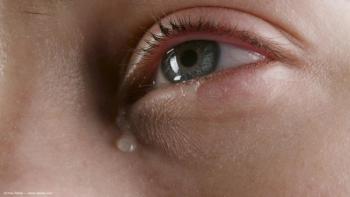
Bascom Palmer Eye Institute ranked as top ophthalmology hospital in US for 22nd year in a row
Key Takeaways
- Bascom Palmer Eye Institute leads ophthalmology rankings for the 22nd year, highlighting its consistent excellence in patient care.
- U.S. News & World Report evaluates hospitals across 15 specialties, with only 13% achieving "Best Hospitals" status.
The annual Best Hospitals report from US News & World Report compares more than 4500 hospitals across 15 specialties and 22 procedures and conditions.
U.S. News & World Report has released its annual list of Best Hospitals, and Bascom Palmer Eye Institute has once again achieved the top spot in the ophthalmology specialty, ranking first for the 22nd consecutive year.
The annual report compares more than 4500 hospitals across 15 specialties and 22 procedures and conditions, of which only 13% received a Best Hospitals designation.1 Ophthalmology is one of many specialties that are included in the ranking. Others include the following:
- Cancer
- Cardiology, heart & vascular surgery
- Diabetes & endocrinology
- Ear, nose & throat
- Gastroenterology & GI surgery
- Geriatrics
- Obstetrics & gynecology
- Neurology & neurosurgery
- Orthopedics
- Psychiatry
- Pulmonology & lung surgery
- Rehabilitation
- Rheumatology
- Urology
Chelsey Wen, senior health data analyst at U.S. News & World Report, commented on the rankings, saying, “Our annual evaluation of hospitals is a data-driven process, and it covers a wide [range] of procedures and conditions that are very pertinent to Americans. That can include things like knee and hip replacements, several different types of cancers, [and] COPD [chronic obstructive pulmonary disease], and it's really meant to be relevant and easy to understand for consumers who are looking for care in their community and specifically for the procedure or condition that they're seeking to treat.”
The ranking of 12 of the 15 specialties is based largely on objective data sources, such as Medicare claims and other publicly available data. However, in ophthalmology, psychiatry, and rheumatology, rankings are based solely on expert opinion surveys of board-certified physicians. These rankings draw from 3 years of surveys of roughly 30,000 physician specialists, who were asked where they would refer their sickest patients. In ophthalmology, any hospital with enough nominations was ranked. However, to be eligible to be ranked, hospitals must have an opinion score of at least 5% across the last 3 years.
According to U.S. News & World Report, this is due to “available data for the 3 specialties being significantly limited, and life-threatening conditions and procedures are more uncommon in ophthalmology and psychiatry, rendering mortality irrelevant as a primary outcome.”
Rankings used nominations from the most recent 3 years of physician surveys (2023, 2024, and 2025). Scores were calculated separately in each year and averaged so that each year’s scores are given equal weighting in the final expert opinion score.
The sample for the 2025 physician survey was selected from a database of all practicing US physicians compiled by Doximity, as was the 2024 survey. Doximity’s Physician Database includes every practicing US physician, identified by National Provider Identifier (NPI) number and sourced from the US Department of Health and Human Services NPI Registry, state medical boards, and specialty boards.
For ophthalmology, the survey was sent to 17,924 physicians with an average response rate of 9.6%, down from the response rate of 11.7% in 2024. Midwest ophthalmologists responded the most (12.3%), whereas ophthalmologists in the South responded the least (7.0%).
To regulate bias, survey responses were adjusted based on a physician’s current affiliation using data from multiple sources to determine whether a physician is currently affiliated with each hospital they nominated. Therefore, nominations from unaffiliated physicians were weighted higher than those from physicians who have a current relationship with the hospital they nominated. A full breakdown of score weighting
Wen told Ophthalmology Times, “The 2025-2026 U.S. News & World Report Best Hospitals for Ophthalmology include 11 institutions that consistently deliver superior patient care. Hospitals like Bascom Palmer Eye Institute (No. 1), Wills Eye Hospital (No. 2), and Wilmer Eye Institute (No. 3) represent the pinnacle of ophthalmic care in the US. This recognition from U.S. News serves as a vital guide for patients seeking the highest quality of specialized eye care.”
The top 10 hospitals for ophthalmology 2024-2025, according to U.S. News & World Report, are as follows:
- Bascom Palmer Eye Institute-University of Miami Hospital & Clinics
- Wills Eye Hospital, Thomas Jefferson University Hospitals
- Wilmer Eye Institute, The Johns Hopkins Hospital
- Mass Eye and Ear, Massachusetts General Hospital
- Stein & Doheny Eye Institutes, UCLA Medical Center
- University of Iowa Health Care Medical Center
- Duke University Hospital, Durham
- University of Michigan Health Kellogg Eye Center
- John A. Moran Eye Center, University of Utah Health
- Cole Eye Institute, Cleveland Clinic and UCSF Health-UCSF Medical Center
Full rankings of hospitals by specialty, procedure, or overall by are
References
Best hospitals by specialty: national rankings. U.S. News & World Report. Accessed July 28, 2025.
https://health.usnews.com/best-hospitals/rankings?src=usn_pr Harp MD. Bascom Palmer Eye Institute ranked as number 1 hospital in ophthalmology. Ophthalmology Times. July 16, 2024. Accessed July 28, 2025. https://www.ophthalmologytimes.com/view/bascom-palmer-eye-institute-ranked-as-number-1-hospital-in-ophthalmology
Newsletter
Don’t miss out—get Ophthalmology Times updates on the latest clinical advancements and expert interviews, straight to your inbox.








































